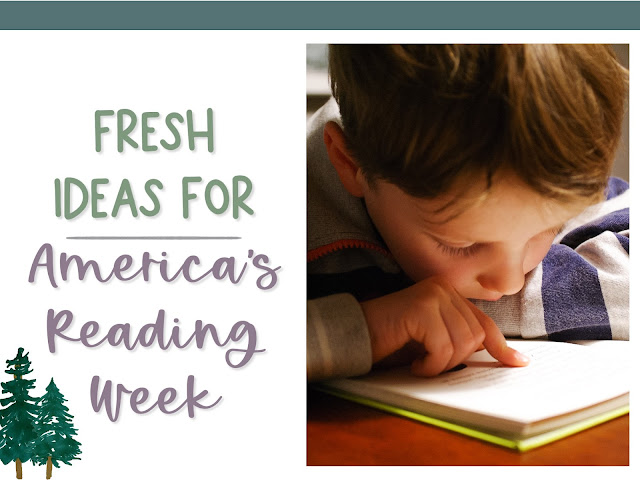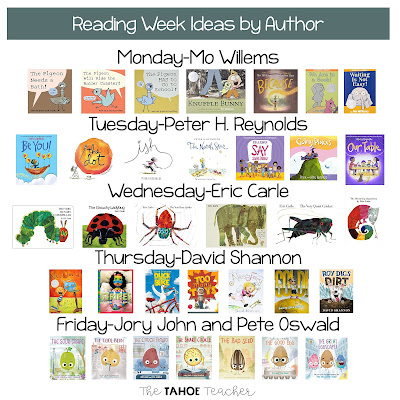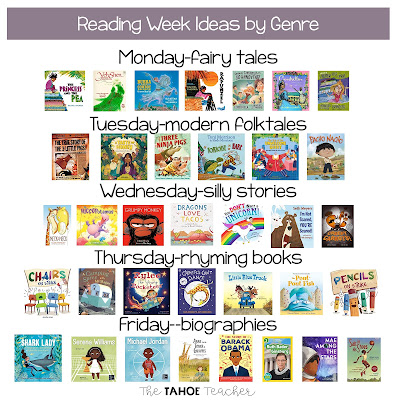Level Up Your Read Across America Week
Hey, y'all! Read Across America Week takes place each year during the first week of March. It started as a tribute to Dr. Seuss and takes place the same week as his birthday on March 2nd. However, Dr. Seuss has become less of the focus and different authors and ideas have moved to the forefront.
The types of books used for Reading Week have evolved over the years as well as the call for more diverse texts. With students becoming more global, it just makes sense to expand our focus from one author to many topics, writers, and ideas.
Author studies
This week could still be used as a week to do author studies with writers of more diverse backgrounds. You could focus on one author for an entire week or choose a different author to read each day. With the focus being on sharing more types of books with students, I personally would choose an author a day to focus on. This gives us plenty of opportunities to compare and contrast stories, writers, styles, illustrations, mood and tone, and more.
Good options for author studies could be:
- Tomie dePaola
- Peter H, Reynolds
- Patricia Polacco
- Mo Willems
- Kevin Henkes
- Laura Numeroff
- Jan Brett
- Eric Carle
- Robert Munsch
- Helen Lester
- David Shannon
- Aaron Reynolds
- Jory John and Pete Oswald
But of course this list is not exhaustive--any of your favorite authors could be a great option for this week.
Genre Studies
Another option is to pick a theme for each day. You could do a different genre each day like fairy tales on Monday, biographies on Tuesday, etc. Possible genre themes could be:
- poetry
- folk tales
- fairy tales
- biographies
- historical fiction
- nonfiction
- silly stories
- rhyming books
With younger students, I'd steer clear of scary stories, unless of course it's about Creepy Underwear!
Doing a genre a day is a fantastic way to get students to recognize the difference between the different genres and what makes each unique. It's also a great way to do a week-long book tasting of sorts and expose students to texts they may not usually pick up on their own.
Books by Location
As the name suggests, you and your class can also literally "read across America." You could choose a book that takes place in different states across the US, or books written by authors from across the country. I'd suggest, if you choose this option, to have students map out each place they "visit" in their readings on a map of the US.
If your goal is to reach all 50 states, you might want to stretch out Reading Week into two or more weeks. You know, for sanity's sake.
Diverse Themes
You could also pick larger themes like books about families on Monday, books about friendships on Tuesday, etc. Possible themes could be:
- families
- friendship
- feelings
- feel-good stories
- diverse reads
- books about advocacy or standing up for others
- immigration
- food
- famous Americans
- travel or adventure
- courage
- growing up
- teamwork
- accepting differences
- compassion
- honesty
- hope
- small acts with big impacts
- tough questions
The younger your students, the simpler your concepts should be. Kindergarteners can discuss tough questions, but you'll get more comprehension and less blank stares if you save the bigger concepts for slightly older students.
Planning Your Week
As you begin to plan your Reading Week, keep a couple of things in mind:
1. The age of your students. Choose texts and topics that will make sense to your students.
2. The amount of time you have. Can you devote the entire week to reading? Or do you have to fit it all into your regular reading block? The amount of time you have to devote to reading will affect the level of depth you can go into.
3. Your current reading goals. If your grade level focuses heavily on different genres, you may want to focus your efforts there. If your students need a ton of SEL work, can you incorporate that into your book choices? Do your students need to branch out and explore different authors? Maybe an author study is your best bet.
4. Any events your school has planned. Some schools leave Reading Week up to each individual class while others do whole school events. This may change the way you structure your week. Find out what your school is planning before you do jump head-first into planning your books and lessons.
5. Can you integrate your Reading Week books into other subjects and get more bang for your buck? Picture books are AH-MAZING for integrating into social studies. Many also work well for science and math. If you can or want to, look at the books you have available (or are available on YouTube) to see what you can integrate into your daily lessons.
6. The setting. Are you a room transformation type teacher? If you are, you may want to transform it for the week according to your genres, authors, or topics of study. Can you cozy up the place a bit? Maybe have a read-in where students bring blankets and pillows for a day. Or maybe you even have wonderful weather in March and can go read outside... All things you might want to consider.
7. Author visits. Can you get a local author in to talk to your class? If so, you may want to spend some time reading their books first. Many authors also have ways to sign up for virtual visits on their websites. It's worth checking out if that's something your students would get excited about.
This is such an exciting week, especially when the whole school gets on board. It makes a huge difference in the number and quality of books my students read after that week.
If your school doesn't already do it up big for Reading Week, I suggest you gather a team of excited teachers like you and create something magical for your students that week.
Next week, I'll be sharing some resources we use in our K-2 classroom for Read Across America week so stay tuned for more! And be sure to follow me on TPT so you don't miss a thing.
So when you've decided how to celebrate Reading Week in your classroom, leave a comment and let us know your plans. I'd love to hear them! Have a wonderful week and I'll talk to you soon.
Stay cozy,






No comments
Post a Comment